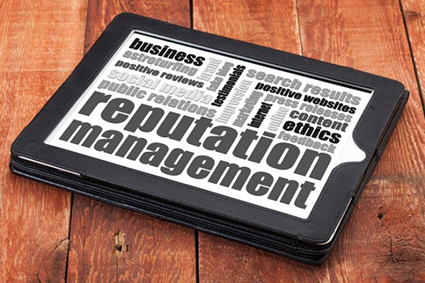Updated April 2017 – The more things change, the more they stay the same. We had originally talked about writing a whole new article on reputation management in 2017, but when we reread this article, we realized that good advice is timeless. With a tweak here and a new employee title there, these tips on how to handle your online reputation today can help you turn customer service into more customers and more sales.
Thanks to social media, everyone has a voice. When people have a bad experience with a business – whether perceived or real – they can quickly take to the internet and tell the world about your brand, slinging bad reviews out into the digital world, potentially wreaking havoc on your business. How you respond can greatly affect your brand, making online reputation management a vital part of your business plan. In this post we will take a look at a few textbook examples of how to effectively respond to customers’ criticism.
1. Respond Directly and Quickly Without Anger
Negative reviews are a fact of life. Not everyone is going to love you and no one expects every review of your business to be glowing. In fact, the more time passes, the more people come to value transparency. They are growing more and more suspicious if all they see are rave reviews online. At the same time, how you handle those negative reviews remains extremely important.
Real-life Yelp Example
When an unsatisfied restaurant customer left a one-star review along with a long narrative on Yelp, the owner of Samovar Tea Lounge in San Francisco quickly stepped up and addressed each and every one of her issues, taking every complaint into consideration. He owned up to every mistake and assured her they were currently working to make necessary improvements for the customer experience.
The best way to deflect the negativity of a bad review is to genuinely, and directly, approach the customer, politely acknowledge their input, and show appreciation for their candor – whether or not you like their honesty. Take time to collect your thoughts, but not for too long. Personal and quick responses show that you are human and make the customer feel valued. And don’t ignore a bad review. You will only alienate your customer more, potentially creating more negativity. Responding directly, sincerely and quickly can turn a negative situation into a positive one quickly.
When you read a negative review your gut reaction may be to respond in anger. You’ve worked hard to build your business and someone or a handful of people aren’t satisfied with your brand. It happens. Don’t react or be defensive. This will only drive the negativity into a spiraling disaster and the bad reviews will spread like wildfire.
2. Focus on Exceptional Customer Service
Real-life Starbucks Example
When there is a service hiccup at Starbucks, for example, when a drink isn’t served in a timely manner or a barista forgets to make your order, they will often give a free drink voucher for your next visit. They go above and beyond to make sure their customer service policy is first-class. They don’t skip a beat. They own up to their mistakes and offer restitution they know is simple, yet powerful, making the customer feel like a VIP. Even if your business can’t afford freebies each time there is a problem or bad review, focus on providing a good experience from the beginning, and have a restitution plan in place that makes sense for your specific business.
The customer may not always be right, but they are the customer, and customers drive your business. Customer service is usually the first point of contact for customers and usually where they form their first impression of your business. At this point, you can outshine your competition or give your customers reason to run to your competition or give bad reviews. You have to repeatedly stand out and impress your customers. And, having a plan in place when there is a glitch is imperative to a consistent, above-and-beyond service experience for your customers.
3. Create a Reputation Management Team
There’s a new boss in town, the Chief Experience Officer. This CEO is tasked with providing excellent customer service across a multitude of touchpoints online. That means he is monitoring twitter hashtags, checking Yelp reviews and ensuring that no matter how a customer reaches out to your company, their experience is as positive as possible.
Real-life Nike Example
At Nike, a separate support team has been established using a separate Twitter handle (@NikeSupport) to deal with all consumer issues, which simplifies the consumer process all in one place. This allows other parts of the company to focus on the various levels involved with running such a successful business. According to Adespresso: “Online platforms are a great way to create and maintain your reputation no matter if you’re responding to a blog post, or talking to customers on Facebook or Twitter.”
Creating a dedicated team or appointing a point-person can greatly reduce pressure on the rest of your staff and guarantee that bad reviews are being handled regularly and with the utmost care. Social media monitoring of Twitter, Facebook, Yelp, blog post comments, etc., ensures that all complaints are dealt with personally and promptly. The reputation management team should focus on: 1) a specific response time, 2) a problem resolution time, and 3) diverse communication channels (i.e., email, phone call, Facebook, blog posts, etc).
Online reputation management is a vital part of your business plan. Remaining transparent and sincere throughout the process will help your customers feel valued, heard and important. Focus on customer service, respond quickly to bad reviews, and offer restitution where applicable. You will likely generate loyal customers from a bad experience. This can lead to an all-around positive presence online, driven by positive reviews.
How are you currently handling your online reputation management?
– See more at: https://www.valpak.com/advertise




